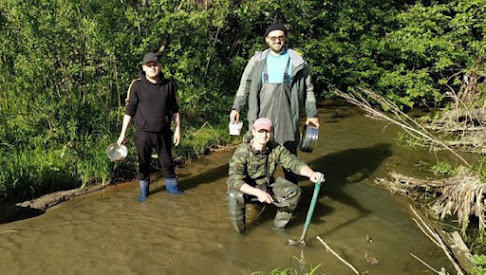 |
| Reconstructed sea bed scenes (A) Pre-extinction, (B-D) Induan (early Early Triassic), (E) Smithian, (F) Spathian Credit: Yaqi Jiang |
Researchers studying ancient sea bed burrows and trails have discovered that bottom burrowing animals were among the first to bounce back after the end-Permian mass extinction.
In a new study, published today in the journal Science Advances, researchers from China, the USA and the UK, reveal how life in the sea recovered from the event, which killed over 90 percent of species on Earth, from their observations of trace fossils.
Life was devastated by the end-Permian mass extinction 252 million years ago, and recovery of life on Earth took millions of years for biodiversity to return to pre-extinction levels. But by examining trails and burrows on the South China sea bed, the international team were able to piece together sea life’s revival by pinpointing what animal activity was happening when.
Professor Michael Benton from the University of Bristol’s School of Earth Sciences, a collaborator on the new paper, said: “The end-Permian mass extinction and the recovery of life in the Early Triassic are very well documented throughout South China.
“We were able to look at trace fossils from 26 sections through the entire series of events, representing seven million crucial years of time, and showing details at 400 sampling points, we finally reconstructed the recovery stages of all animals including benthos, nekton, as well as these soft-bodied burrowing animals in the ocean.”










.jpg)














.jpg)
